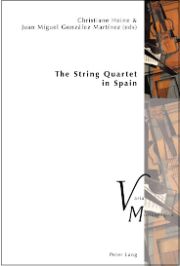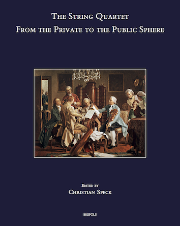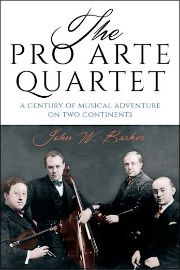Inexhaustible genus
Four weighty publications from recent years look at the string quartet from different angles.

For more than 250 years, the string quartet has not only been the most aesthetically ennobled genre of chamber music, but also the genre that has survived all the storms and revolutions of music history into the 21st century unbroken and unscathed. There are various reasons for this: the almost unmanageable international body of works with a simultaneous emphasis on an extended core repertoire even in the 20th century; the many stylistic changes with clearly traditional and intertextual points of reference; the early establishment of standing ensembles and the professionalization of compositional demands. In addition, there are the technical aspects of composition that are still valid under various guises, which Ludwig Finscher already worked out and recorded for Haydn's Opus 33. And so, even today, the string quartet corresponds to an entire cosmos into which one can immerse oneself: with brightly shining stars pointing the way, but also with a blurred, glimmering band in which one can lose oneself as in the Milky Way. The perspectives are inexhaustible, so that studies and books about the quartet not only fill shelves, but there is always something new to discover. Four book publications from the last few years show how different the aspects can be.
Hermann Walther takes an encyclopedic approach to the genre. In view of the data and lists available on the Internet, his List of the string quartet seems anachronistic at first glance (as does the unfortunate title). And yet its information, condensed to the bare essentials, offers a great deal, namely over 11,000 works, the composers listed alphabetically, with publisher's details. A treasure trove like an old telephone directory, which one would wish to have as a sortable data set for further analysis.
A virtually unknown part of the history of the genre is the subject of an almost 1000-page volume on the string quartet in Spain with 24 contributions in German, English, French and Spanish, including four comprehensive overviews and further special studies. A volume that invites you to browse and arouses curiosity about the sounding works.
The costly but beautifully appointed volume published by Christian Speck at Brepols has a completely different focus, documenting lectures from a 2013 conference in Lucca (enriched by a few additions). It examines case studies of the genre between private music-making and public performance, as well as in-depth studies of individual works.
John W. Barker, on the other hand, dedicates a study to the Pro Arte Quartet, founded in Brussels in 1912 and still in existence after many reshuffles, which not only tells the sometimes eventful history of the ensemble, but also a piece of music history itself. In the detailed appendices, fans of discographical information get their money's worth; however, I would have been happier to see a list of all the works ever performed.
Hermann Walther: Directory of the string quartet. String quartet compositions from 1700 to the present day, 596 p., € 39.99, Schott, Mainz 2017, ISBN 978-3-95983-542-8
The String Quartet in Spain, ed. by Christiane Heine and Juan Miguel González Martínez, 982 p., Fr. 115.95, Peter Lang, Bern 2017, ISBN 978-3-0343-2853-1
The String Quartet. From the Private to the Public Sphere, ed. by Christian Speck, XXX + 388 p., € 110.00, Brepols, Turnhout 2016, ISBN 978-2-503-56800-3
John W. Barker: The Pro Arte Quartet. A Century of Musical Adventure on Two Continents. 368 p., € 29.50, University of Rochester Press, Rochester 2017, ISBN 978-1-58046-906-7











